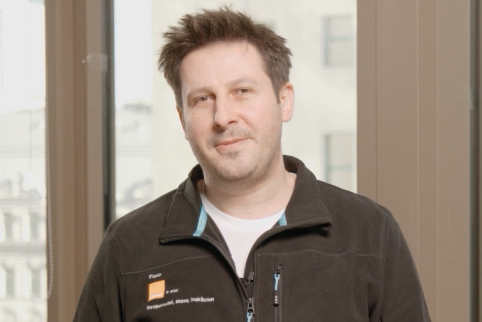Culture in a Hybrid World: How to Build and Sustain It?
7 min read

It’s no secret that hybrid work is here to stay for certain companies. So how can we build and sustain our company culture in a hybrid work setting?
No doubt, this is a parody. However, the pandemic did encourage the development of new habits and behaviors in each of us. So now as a leader or as an HR professional your responsibility is to align and co-create with your people a culture that drives belonging and performance.
Culture in a hybrid world: productivity redefined and focus on wellbeing
Productivity
A recent paper published by Microsoft in the Nature Human Behavior concluded that “remote work caused the formal business groups and informal communities within Microsoft to become less interconnected and more siloed.” This comes with an expensive cost affecting the innovation, knowledge transfer and directly or indirectly, productivity.
Satya Nadella, CEO at Microsoft, mentioned the following: “Over the past year, no area has undergone more rapid transformation than the way we work. Employee expectations are changing, and we will need to define productivity much more broadly — inclusive of collaboration, learning, and wellbeing to drive career advancement for every worker, including frontline and knowledge workers, as well as for new graduates and those who are in the workforce today. All this needs to be done with flexibility in when, where, and how people work.”
To increase productivity and avoid burnout or FOMO (fear of missing out), take the time to discuss with your team and establish team agreements and norms. Microsoft has prepared and shared a guide for managers on how to develop team agreements. Understand what are individual workstyles within your team and then decide how and where there is room for compromise to fulfil company and team needs.
Next, decide together what type of work should be done within the office and what work is more suitable for doing remotely, that requires more focus, maybe. For example, routine and individual tasks are perfect for a remote context, while tasks that rely on collaboration, creativity and problem solving might be more efficient if done in-person.
Wellbeing
People want to go to the office for social connections and collaboration. Create context for collaborative work independently of where the work itself is done. However, be mindful about the team agreements we’ve discussed above.
When working remotely, encourage your people to plan ahead their day and prioritize their wellbeing, family and hobbies. Even if that means taking a nap in the middle of the day. Going for a walk or run. Or for taking a yoga class. Or maybe just sitting still. The important thing here is to identify what works for each team member to relax and reboot. Last but not least, help your people to set boundaries.
In conclusion, share with your people valuable guidelines and good practices that might help them to increase productivity, feel safe and engaged. Dr. Sahar Yousef, a professor at Haas School of Business, Berkeley, who studies in what circumstances the human body and brain work best, shared the following tips to sustain a productive but yet healthy mindset when working from home:
Culture in a hybrid world: reinvent your meetings
Video conferencing might be exhausting
Microsoft’s research gathered the most important reasons why video conferencing might be so exhausting:
- reduced possibility to “read” people through non-verbal communication.
- continuous attention on others instead of a big meeting room. Now we have all our colleagues (plus the screen share) in one 13”-17” monitor or laptop screen. And all this gets even more exhausting when there is low quality media or poor internet connection.
- meeting load – suddenly all the activity started happening online and our calendars are full of stacked meetings, one after another. There is no more time to have a mental closure, a break. a reorganization of thoughts, reminding what the next meeting is about and who’s going to be there.
- interaction in remote big group meetings might be jeopardized when there are no rules for turn-taking – who speaks and most importantly, how can you make sure that everyone in the virtual room is encouraged to and actually speaks up. Hence, in this situation we have two perspectives. One, the chaos created in case of turn-taking and the second, emotional impact when people start feeling they are unable to say something in a meeting.
And these are just a couple of reasons mentioned in the research that you might start addressing.
Reinvent your meetings
It might look impossible and overwhelming. However, here are several ideas that can guide you in reinventing your meetings and fostering your company culture:
- encourage small talk in the beginning of the meetings. Be genuine and curious about how your people are feeling. What’s happening in their lives? Maybe you’ve heard something about an event in their city. Maybe they just need to vent about something.
- similar to the start of the meeting, it is important to have a clear closure of it. Draw conclusions on what was discussed and action items agreed. Announce 5 or 10 minutes before the meeting ends so that everyone has the mental space to wrap up the conversation outcomes.
- have a clear, open and collaborative agenda – everyone should know what the meeting is about and how they can contribute.
- make sure everyone in the meetings has a role – meeting fatigue is real. So be mindful of your people’s time.
- practice and encourage from time to time video-off meetings. Of course, we miss each other and video calls are blessings for these times, but again, be mindful with your people. Not everyone has a good hair day daily (wink-wink).
- create a ritual of meetings-free days. And as a leader, brag about it. Share with your people how great and productive it feels to have one day per week without any meetings scheduled.
Note to self: when organising in-office meetings while having several people unable to join physically, make sure they feel involved and seen. In these cases some companies introduced a good practice of attending a meeting individually from separate rooms, even while being in office. This practice is a good example of inclusion for colleagues who are working remotely.
Culture in a hybrid world: belonging
We, people, are social creatures and one of our needs is to have a feeling of belonging and community. When people feel their values, principles and beliefs align with the company culture, they will thrive in performance and engagement. While the lack of it, will slightly make room for burnout and isolation, which sooner or later will negatively affect their performance.
Diversity, inclusion and belonging: Hire for traits, fostering culture-addition and making sure each new joiner brings something new, valuable to your culture. Of course, it comes with a cost. At first it will slow things down, communication will collide, more attention from you as a leader will be needed to master it. However, different opinions will bring different perspectives, increasing creativity and innovation.
Assess your team’s sentiment on belonging
Hence we arrived at the part we love the most – team culture and belonging assessments. Here are some questions you might ask in your next campaign to assess your team’s sentiment on belonging and inclusion:
- I feel I can succeed in my work and team while being true to myself.
- I feel free and comfortable to express my feelings and opinions with my team.
- My team openly shares work-related information.
- I feel I belong on my team.
- My manager values my individuality and encourages differences in the way we view projects and work.
Once you assess how inclusive your teammates feel, draw conclusions. Then, brainstorm on improvements and implement them for a more inclusive and diverse environment where people feel safe and valued.
In conclusion, take this period as a new chapter, a new white board where you can draw and remake your culture. You can now decide how to reshape it and build a culture your people love and identify with.








